Thursday, December 20th 2018

LG to Unveil New Gram Laptops at CES 2019
It appears that releases from CES are already making their way in the press even before the year ends. We learned of LG's new "Ultra" series monitors recently, and now we get to know about their plans from the laptops business unit. Their Gram lineup was developed to feature lightweight portable laptops with enhanced user experience in mind, and joining the series in 2019 are the 14-inch LG Gram 2-in-1 (model 14T990) and the new LG Gram 17 (model 17Z990), both of which are 2019 CES Innovation Award winners.
The 14" Gram 2-in-1 is a convertible, shifting from tablet to laptop at the whim of the user. It features a 360° hinge coupled with a touch screen to add more use cases in between. This by itself is not necessarily new or unique to the market, but a welcome addition to fans of the LG brand nonetheless. The company wants to also assure the customer that the laptop is built to last, having met the U.S. military MIL-STD-810G standard for durability. Part of this no doubt comes from the incorporation of Corning's Gorilla Glass 5 on the touch screen, and the display underneath uses LG's IPS technology. More information on this, and the Gram 17, following the break.There was no word on the display resolution, refresh rate, or the hardware inside in the issued press release, however the product page is already published which makes things easier for us. Accordingly, we see the use of an Intel Core i7-8565U processor running at 1.80 GHz/4.60 GHz w/Intel UHD Graphics 620 combined with 16 GB of DDR4 memory (dual channel at 2400 MHz) and a 512 GB M.2 2280 SSD. LG also says that it comes with a a Wacom AES 2.0 pen with 4,096 pressure levels and tilt detection which will come in handy on the 14" 1080p touch screen. The rated battery life is up to 21 hours courtesy a 72 W battery, and the overall package weighs all of 1.13 Kg (2.5 lbs). Connectivity is on the stronger side of average for convertibles, including a full size HDMI port, a USB 3.1 Type-C with RJ45 gender, two USB 3.1 Type A ports, micro-SD slot, headphone out, Bluetooth 5.0, and 802.11ac (2x2).The new Gram 17 takes on the more traditional standalone laptop form factor, however, as part of the Gram lineup, LG claims the overall dimensions are such that it compares directly to a typical 15.6" laptop despite fitting the larger screen, and part of this comes via the minimal bezels we see on the render image provided. The Gram 17 display adopts a WQXGA (2560x1600) resolution, which means we get the rarely seen 16:10 aspect ratio. The added vertical space means that comparing the 17" display here to one using a 16:9 aspect ratio is not really apples to apples, and this is arguably a bigger engineering feat than first looks indicate given the overall form factor.
What this all means is that the Gram 17 comes in at all of 1.36 Kg (3 lbs) in mass, which LG claims makes it the lightest 17" laptop on the market (again, keep the aspect ratio in mind). Powering the laptop is the same Intel Core i7-8565U processor combined with up to 16 GB DDR4 RAM, a standard 256 GB SSD combined with an extra 2.5" slot for an additional storage drive, and a 72 W battery promising up to 19.5 hours of usage. Thunderbolt 3 is included here, with rated speeds up to 40 Gbps, and rounding off the feature list mentioned thus far is a "Precision Glass Touchpad" that "ensures responsive control and offers four-point touch recognition", a backlit keyboard with two brightness settings, the same military standard for durability as the 14" 2-in-1, a fingerprint reader for security credentials as well as DTS Headphone X for simulation of as much as 11.1 channels of audio.The product page for the Gram 17 has an example configuration with 512 GB of SSD storage listed for a suggested price of $1699.99, which gives us some reference on what to expect for other configurations as well as as the Gram 14 2-in-1. More details on pricing and retail availability will come out during CES early next year.
The 14" Gram 2-in-1 is a convertible, shifting from tablet to laptop at the whim of the user. It features a 360° hinge coupled with a touch screen to add more use cases in between. This by itself is not necessarily new or unique to the market, but a welcome addition to fans of the LG brand nonetheless. The company wants to also assure the customer that the laptop is built to last, having met the U.S. military MIL-STD-810G standard for durability. Part of this no doubt comes from the incorporation of Corning's Gorilla Glass 5 on the touch screen, and the display underneath uses LG's IPS technology. More information on this, and the Gram 17, following the break.There was no word on the display resolution, refresh rate, or the hardware inside in the issued press release, however the product page is already published which makes things easier for us. Accordingly, we see the use of an Intel Core i7-8565U processor running at 1.80 GHz/4.60 GHz w/Intel UHD Graphics 620 combined with 16 GB of DDR4 memory (dual channel at 2400 MHz) and a 512 GB M.2 2280 SSD. LG also says that it comes with a a Wacom AES 2.0 pen with 4,096 pressure levels and tilt detection which will come in handy on the 14" 1080p touch screen. The rated battery life is up to 21 hours courtesy a 72 W battery, and the overall package weighs all of 1.13 Kg (2.5 lbs). Connectivity is on the stronger side of average for convertibles, including a full size HDMI port, a USB 3.1 Type-C with RJ45 gender, two USB 3.1 Type A ports, micro-SD slot, headphone out, Bluetooth 5.0, and 802.11ac (2x2).The new Gram 17 takes on the more traditional standalone laptop form factor, however, as part of the Gram lineup, LG claims the overall dimensions are such that it compares directly to a typical 15.6" laptop despite fitting the larger screen, and part of this comes via the minimal bezels we see on the render image provided. The Gram 17 display adopts a WQXGA (2560x1600) resolution, which means we get the rarely seen 16:10 aspect ratio. The added vertical space means that comparing the 17" display here to one using a 16:9 aspect ratio is not really apples to apples, and this is arguably a bigger engineering feat than first looks indicate given the overall form factor.
What this all means is that the Gram 17 comes in at all of 1.36 Kg (3 lbs) in mass, which LG claims makes it the lightest 17" laptop on the market (again, keep the aspect ratio in mind). Powering the laptop is the same Intel Core i7-8565U processor combined with up to 16 GB DDR4 RAM, a standard 256 GB SSD combined with an extra 2.5" slot for an additional storage drive, and a 72 W battery promising up to 19.5 hours of usage. Thunderbolt 3 is included here, with rated speeds up to 40 Gbps, and rounding off the feature list mentioned thus far is a "Precision Glass Touchpad" that "ensures responsive control and offers four-point touch recognition", a backlit keyboard with two brightness settings, the same military standard for durability as the 14" 2-in-1, a fingerprint reader for security credentials as well as DTS Headphone X for simulation of as much as 11.1 channels of audio.The product page for the Gram 17 has an example configuration with 512 GB of SSD storage listed for a suggested price of $1699.99, which gives us some reference on what to expect for other configurations as well as as the Gram 14 2-in-1. More details on pricing and retail availability will come out during CES early next year.
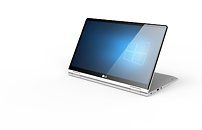
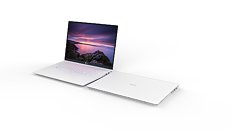
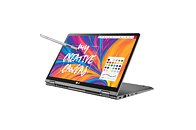
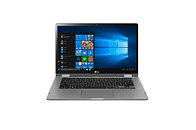
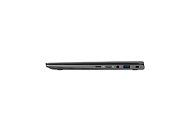
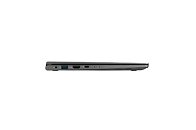


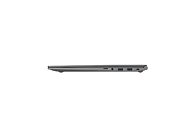
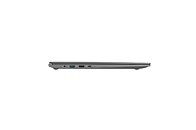
6 Comments on LG to Unveil New Gram Laptops at CES 2019
Which is better:
4:3 1920x1440
or
16:9 2560x1440
"Work space" is another matter and is resolution dependent (assuming a screen large enough that you aren't scaling the content), but surface area is based on the physical screen dimensions, IMO anyway. ;)
If triangle hypotenuse is C, while other two sides are A = a*x, B = b*x (a,b - aspect ratio)
obviously C^2 = A^2 + B^2, so x^2 = C^2 / ( a^2 + b^2 )
whereas screen surface S = A*B = a*b*x^2 = a*b*C^2/(a^2+b^2)
For 17" = 0,4318 meters and 4:3 aspect ratio we get:
S = 4*3*0,4318^2/(4^2+3^2) = 12/25*0,4318^2 = 0,0895 square meters
For 17" = 0,4318 meters and 16:9 aspect ratio we get:
S = 16*9*0,4318^2/(16^2+9^2) = 26,849/337 = 0,07967 square meters
so, obviously, 4:3 is "better" (if we are trying to fill huge wall with as small as possible amount of screens) or "worse" (if we are trying to put as many as possible screens into huge bag).
more than 12,3% "better" or "worse".